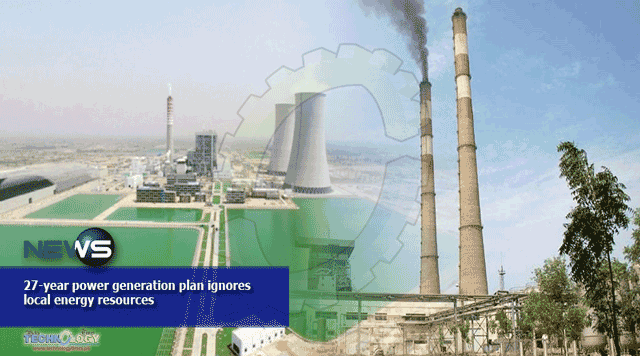All the four provinces, Azad Kashmir as well as key public and private sector stakeholders have pointed out deficiencies in the proposed 27-year Integrated Generation Capacity Expansion Plan (IGCEP 2020-2047), saying it is overambitious, undermines indigenous energy resources and makes faulty assumptions in comparing various generation technologies to the advantage of thermal plants.

This is the crux of about two dozen interventions submitted by public and private sector stakeholders to the National Electric Power Regulatory Authority (Nepra) against the IGCEP, proposed by the National Transmission & Despatch Company — a corporate entity of the Energy Ministry’s power division.
Documents seen by Dawn suggest that a majority of the interveners have protested over major hydropower projects allegedly being pushed back, e.g. Diamer-Bhasha energy to 2043 instead of 2028-29.
Others have questioned energy demand growth forecasts of seven to eight per cent on average, necessitating 130,000 to 220,00mw generation capacity by 2047.
Provinces, Azad Kashmir, stakeholders point out various other flaws
The government entities and its development partners assumed an average growth rate of no more than 3.8pc. Some experts have also opposed setting up of more nuclear power plants as the average cost comes to $4.5 million per megawatt compared to $500,000 to $1m per MW in other technologies.
The government of Azad Kashmir has highlighted faults in planning. It argued the IGCEP claims to be based on least cost consideration, but optimisation of least cost options was not based on an equal footing.
It said the hydropower resources had been exploited everywhere on priority for being cheaper, renewable, and most importantly providing ancillary services such as frequency control, grid stability, generation option during peak demand and close to zero cost of generation, but IGCEP ignored this aspect.
It pointed out the economic life of hydropower had been taken as 30-50 years against their actual life-cycle of 100 years and above, proven by projects constructed over 100 years ago which are still in service.
In contrast, the nuclear option has been given a 70-year life. “This anomaly needs to be corrected as it negates the real value of hydropower’s very long working life and close to zero generation cost over this period,” wrote the AJK government.
It said a majority of the AJK hydropower projects had credible identified sponsors, feasibility studies and were ready to take off, but due to a flawed optimisation methodology they had been replaced by more than 20,000 MW of wind- and solar-driven projects, proposed up to 2030 in order just to comply with ARE Policy 2019.
“More than 93pc of these ARE projects are of candidate status, for which there are no identified sponsors, sites, or feasibility studies.”
Both AJK and Khyber Pakhtunkhwa have demanded that all other generation options should be worked around hydropower commissioning timelines in order to extract maximum benefit from this God-given indigenous resource.
Expensive hydroelectricity?
They noted that the IGCEP’s wrong classification of hydropower as an expensive generation option only on the basis of construction cost, without considering lifecycle cost and fuel cost of thermal energy had pushed back many important projects by 20 years and this should be corrected.
According to the KP government, it had invested, in collaboration with the private sector, substantial time and money in completion of feasibility studies and other works for a number of projects under the federal and provincial power policies, but the IGCEP had ignored the status of such projects. “It has binned them mostly into a time slot post 2040.” The KP said the IGCEP should make estimates about future projects instead of making second guesses about existing commitments.
The KP also criticised the long-term plants’ heavy reliance – 32,967mw – on coal. It said it was commendable to switch to local sources, but it was also necessary to take into consideration the availability and ancillary requirements which have been overlooked in the case of Thar coal.
For example, if the least cost tariff was one of the main criteria of IGECP than the tariff should be properly indexed after taking into account all operational costs.
The Alternative Energy Development Board (AEDB) – another agency of the power division – said that for a meaningful comparison between various scenarios considered in the analysis, the generation cost per unit (and its constituent’s capacity component and energy component) should have been estimated for each financial year in line with Alternative & Renewable Energy Policy (AREP), which promised addition of ARE projects through displacement of more expensive fossil energy as long as they are cheaper in order to lower the basket price of electricity.
The AEDB said the option of using existing thermal capacity as reserves (even after expiry of their PPAs) has not been considered in the analysis. Many assets have useful life even after the end of their PPAs and using such plants as reserve capacity would help save costs and defer new investments.
The AEDB also advised that it would be prudent that the study was complemented by a “transmission expansion plan” in order to ensure that the capacity addition proposed by the software can be dispatched in reality given the current transmission bottlenecks.
Net metering
The Punjab government pointed out that an important aspect for addition of Captive Power Plants (CPP), Net Metering by residential, commercial, agriculture and industrial consumers, is not accounted for by the IGCEP and this will surely have an impact on short-term, medium-term and long-term planning.
The Punjab government also said it appeared the expansion plan was outright fixated with adding local coal power projects into the system, comprising about 40pc of the energy mix, by 2047 in different scenarios.
“It is observed that enhanced share coal is based on assumptions as LOIs (no feasibilities carried out) are not yet issued by any facilitated agency and hence are not practically envisioned.”
